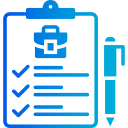Clarify Your Target Role Before You Apply Everywhere
Instead of chasing every listing, pick a lane: help desk, QA, junior developer, SOC analyst, or data analyst. Focused learning compounds faster, and hiring managers recognize clarity. Every project, bullet point, and course should reflect that selected path, signaling commitment rather than scattered curiosity.
Clarify Your Target Role Before You Apply Everywhere
Scan twenty recent postings for your chosen role. Tally the recurring tools, frameworks, and responsibilities. If everyone asks for tickets, logging, and scripting, prioritize those. This quick research prevents wasted effort and helps your resume mirror real demand, not just what feels fun or familiar.
Clarify Your Target Role Before You Apply Everywhere
Create milestones for skills, projects, and applications with weekly check-ins. Share your plan publicly on LinkedIn to invite feedback and accountability. Momentum loves visibility, and you’ll meet supporters who point you toward internships, volunteer gigs, or practice interviews that accelerate your first break.




